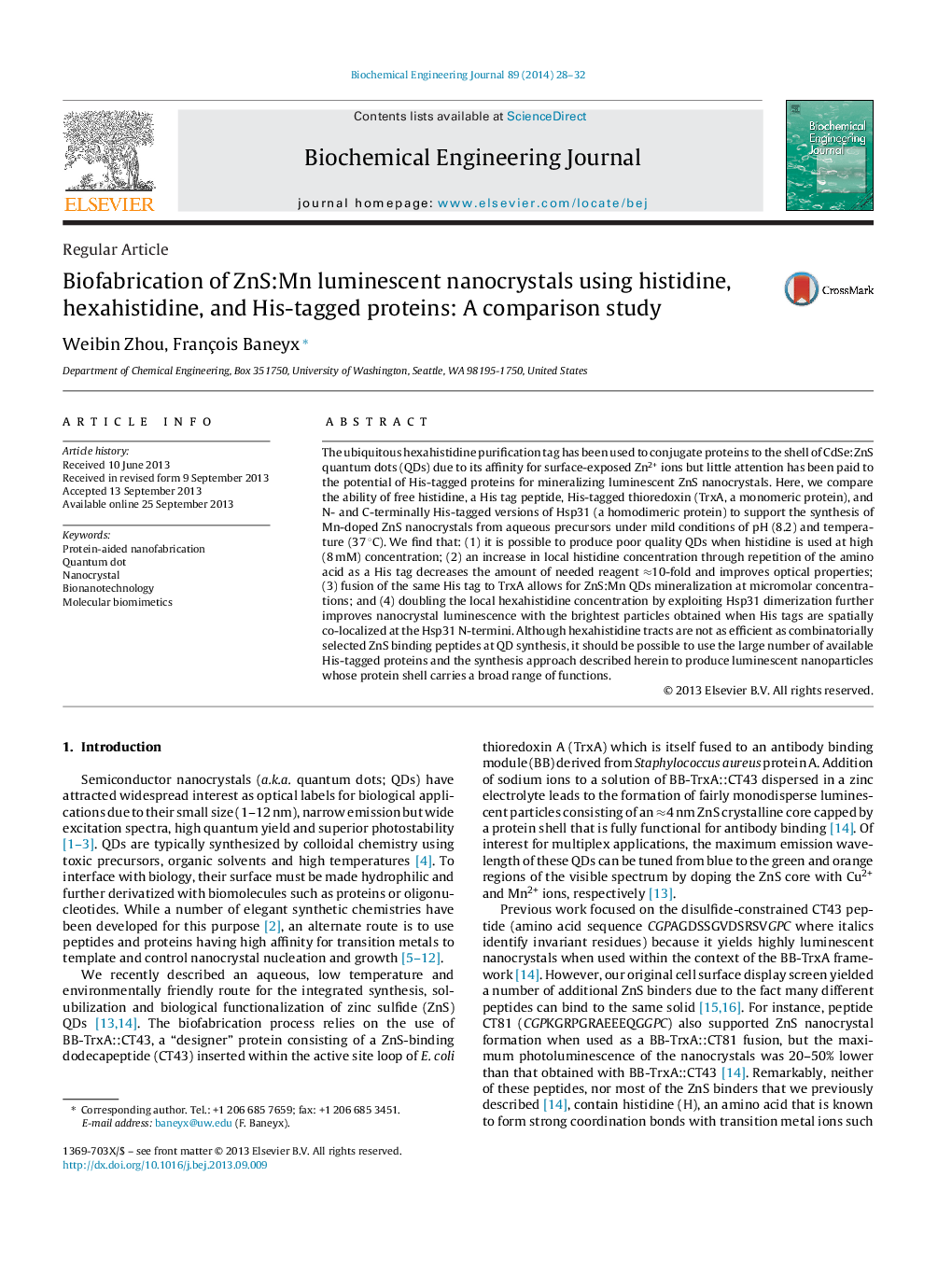| Article ID | Journal | Published Year | Pages | File Type |
|---|---|---|---|---|
| 3144 | Biochemical Engineering Journal | 2014 | 5 Pages |
•We show that His-tagged proteins can mineralize ZnS:Mn QDs.•Increasing histidine local concentration improves QD optical quality.•Increasing histidine spatial proximity improves QD optical quality.
The ubiquitous hexahistidine purification tag has been used to conjugate proteins to the shell of CdSe:ZnS quantum dots (QDs) due to its affinity for surface-exposed Zn2+ ions but little attention has been paid to the potential of His-tagged proteins for mineralizing luminescent ZnS nanocrystals. Here, we compare the ability of free histidine, a His tag peptide, His-tagged thioredoxin (TrxA, a monomeric protein), and N- and C-terminally His-tagged versions of Hsp31 (a homodimeric protein) to support the synthesis of Mn-doped ZnS nanocrystals from aqueous precursors under mild conditions of pH (8.2) and temperature (37 °C). We find that: (1) it is possible to produce poor quality QDs when histidine is used at high (8 mM) concentration; (2) an increase in local histidine concentration through repetition of the amino acid as a His tag decreases the amount of needed reagent ≈10-fold and improves optical properties; (3) fusion of the same His tag to TrxA allows for ZnS:Mn QDs mineralization at micromolar concentrations; and (4) doubling the local hexahistidine concentration by exploiting Hsp31 dimerization further improves nanocrystal luminescence with the brightest particles obtained when His tags are spatially co-localized at the Hsp31 N-termini. Although hexahistidine tracts are not as efficient as combinatorially selected ZnS binding peptides at QD synthesis, it should be possible to use the large number of available His-tagged proteins and the synthesis approach described herein to produce luminescent nanoparticles whose protein shell carries a broad range of functions.
Graphical abstractFigure optionsDownload full-size imageDownload as PowerPoint slide
